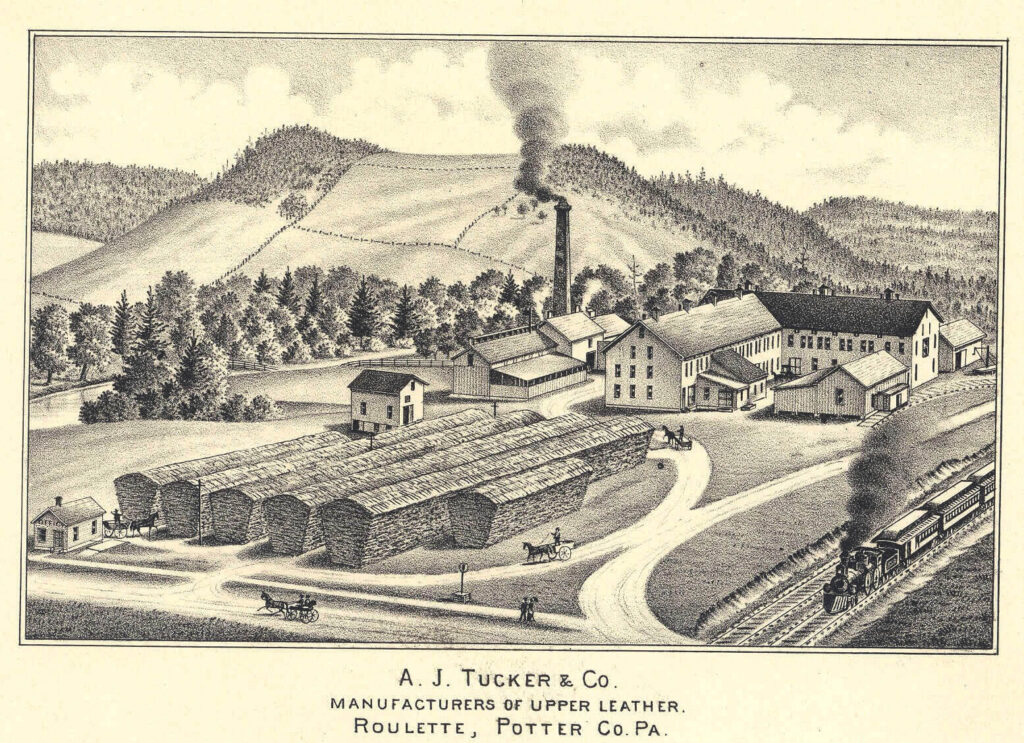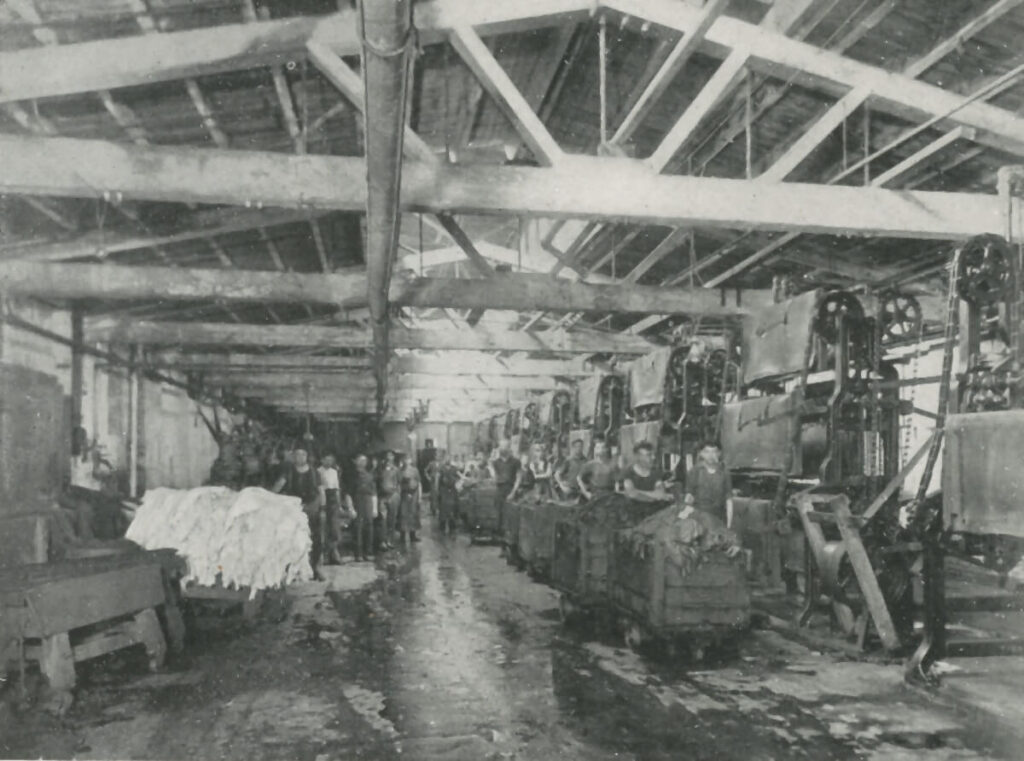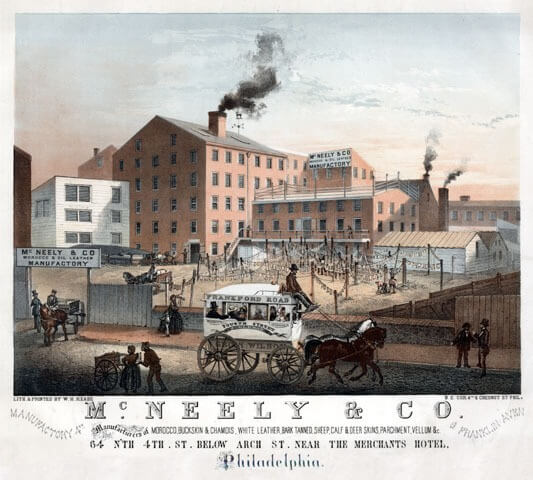Heritage
Heritage
Tioga County, known today for its stunning Pine Creek Gorge, also called “Pennsylvania’s Grand Canyon,” has a rich history in the leather tanning industry. While the county is famous for its coal mining and lumbering industries, its significant role in the nation’s tanning industry is often overlooked. In the late 19th century, Tioga County was part of a vast region in northern and western Pennsylvania that boasted the world’s largest concentration of leather tanning plants.
Tanning, the process of converting animal hides into leather, was complex and traditionally done on a small scale. By 1880, Pennsylvania had 890 tanneries, with many located in Tioga County. These tanneries primarily produced sole leather and coarser leathers used in factory belts and harnesses. They were strategically located near the region’s rich forests, as the industry relied on the bark of oak and hemlock trees for tannin, a crucial ingredient in the tanning process.
Unfortunately, the heavy reliance on hemlock bark led to significant deforestation and pollution. The stately hemlock, often left to rot after its bark was stripped, was later used for paper pulp, rough construction, and boxes.

In the final decade of the 19th century, a wave of consolidation led to the closure of over a third of Pennsylvania’s tanneries. However, employment and production remained robust. By 1900, Pennsylvania was the top leather-producing state, contributing over a quarter of the national output.
Large companies such as the United States Leather Company, Howes Brothers, Horton Crary and Company, and Armour, a national meatpacking giant, came to dominate the industry. These firms often owned multiple plants and vast tracts of forest land to ensure a steady supply of tanbark. For instance, Horton Crary and Company owned 125,000 acres of forest.
The tanneries had a profound impact on the communities surrounding them. Towns like Elkland, just south of the New York-Pennsylvania border, were company-dominated. The Elkland Leather Company, one of the largest sole-leather tanneries in the world during the 1920s and 1930s, employed about 1,000 of the town’s 3,000 residents. The company owned houses, ran a company store, provided medical services (deducted from worker paychecks), and generated electricity through its subsidiary, the Elkland Electric Company.
Despite being union-free for many years, the New Deal era saw attempts to organize tannery workers. The United Leather Workers and the National Leather Workers Association both tried, with limited success. A significant strike in 1937 failed, but by 1940, union elections began transforming tanneries in western Pennsylvania into union shops.
The industry’s decline started as tanneries no longer needed to be near forests due to the advent of mineral-based tanning and tanning extracts. By World War II, Pennsylvania had only 59 tanneries, producing 10% of the nation’s leather.

By 2000, despite many tannery closures, northern Pennsylvania, including Tioga County, remained significant in the leather tanning industry. Pennsylvania continued to be the largest employer of tanners in the nation, with over 2,300 workers.

To learn more about Tioga County’s rich history in the tanning industry, visit the historical marker at Courthouse Square in Wellsboro, dedicated on March 26, 1982. The Tioga County Historical Society offers further insights into this fascinating chapter of Pennsylvania’s industrial past.
For a deeper dive into the struggles and achievements of the leather workers, Philip S. Foner’s book, “The Fur and Leather Workers Union: A Story of Dramatic Struggles and Achievements,” provides an in-depth look at the industry’s history.
Heritage
During the era of the Great Depression, many young men left school to help support their families. Traditional educational paths were disrupted for countless individuals. The Civilian Conservation Corp (CCC), launched in 1933 as part of President Franklin D. Roosevelt’s New Deal,... Read more
© 2025 Lumber Heritage Region LLC | Website Designed & Hosted by Pixel & Hammer